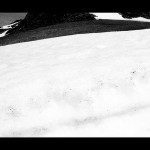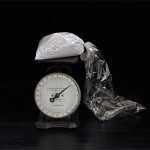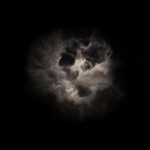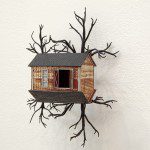(translation by Art Mûr)
Inanimate objects, do you have a soul?1 – Lamartine
Whereas the soul, or anima, has long been considered to be the prerogative of the human being, the above mentioned poem segment by Alphonse de Lamartine seems to question such
a belief, as well as our often anthropocentric view and understanding of the universe. These questions and concerns are also shared and pondered upon by numerous individuals from diverse backgrounds – that ranges from artistic creation to scientific research.
Indeed, the aura or soul of the object fascinated and still fascinates poets and writers, such as Guy de Maupassant, whose fantastic short stories often include objects that suddenly become “alive”, or contemporary Japanese writer Yogo Ogawa, whose writings are literally haunted by objects that gained unexpected power through their transformation from ordinary to extraordinary; art historians, such as Georges Didi-Huberman, who wrote at length on the artwork’s aura, the relic and the génie du non-lieu; sociologists, such as Nathalie Heinich, who elaborated the concept of the “objectperson” 2; and even specialists of the occult and psychometrists, who have the ability to “read” an object in order to discover its past and its “consciousness.”3 It is within this larger context, that this exhibition project can be situated. The selected artworks by all ten participating artists (including a duo) are all haunted by this “magical presence” Heinich alludes to.4
This intrinsic quality of the object and location manifests itself differently from one project to the other, as artists employ contrasting strategies to either simulate or highlight a presence. Thus, Laurent Craste’s, Guillaume Lachapelle’s and Kevin Yates’ works are embedded with a Freudian uncanniness, as Annie Tung’s, Spring Hurlbut’s and April Hickox’s have more to do with the trace and the relic. For their part, the photographs of interior and exterior locations by Ewa Monika Zebrowski, the Sanchez brothers, Yann Pocreau and Valérie Félix bear witness to an unspeakable and elusive presence. The image therefore becomes the location of a confrontation between the viewer and an invisible entity – and the landscape becomes portrait.
1. Alphonse de Lamartine, « Milly ou la terre natale », OEuvres complètes (tome
2), Paris : Gosselin, Furne, Pagnerre, 1847, p. 159. (translation by Art Mur)
2. Nathalie Heinich, « Les Objets-personnes : Fétiches, reliques et oeuvres d’art
», Sociologie de l’art, n. 6 (1993), p. 25-55.
3. See William Denton, The Soul of Things: Psychometric Experiments for Re-living
History, 1863. Quoted in Jennifer Fisher, « Psychometry and the Affective Artifact
», cmagazine, n. 106 (Summer 2010), p. 10-19.
4. Heinich, Objets-personnes, 26.














